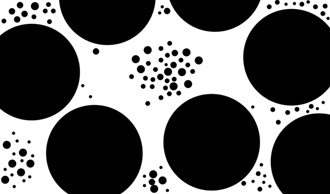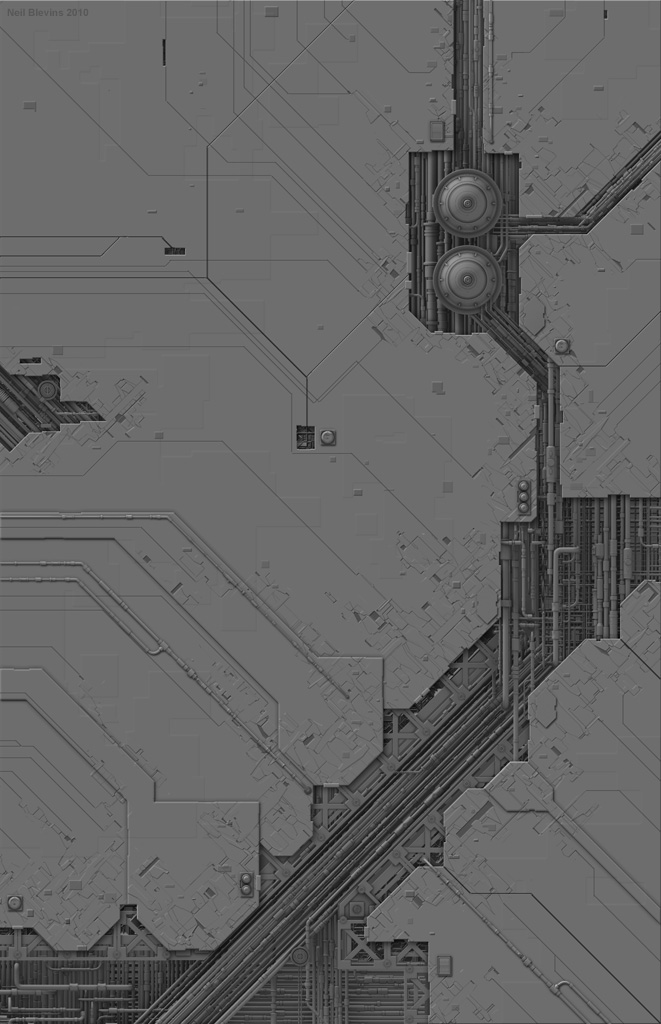
If the whole image was equally detailed, the eye would get overloaded and would move away quickly. But instead, you only add details to specific areas, the details draw the eye to that area (because they contrast with the open areas), then as the eye moves away, it's presented with a less populated area where it can rest before hitting another detailed area.
Basically you're trying to create large uninterrupted shapes with small condensed areas of detail. The District 9 Art Book had a great phrase on the subject, they referred to this principal and how it guided the design of a number of elements in the film. "Simple overall shapes with moments of hyper-detailing punctuating the cleaner surface".
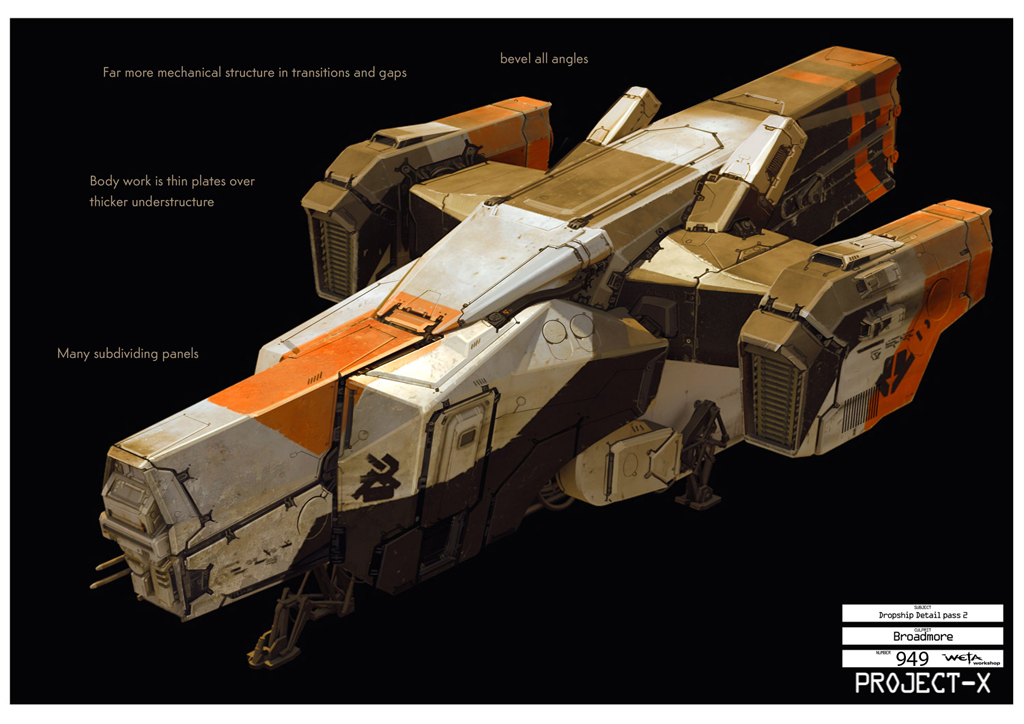
Lets look at another example of the same thing. The first image below is a little dull, it has contrast in value, but all the squares are the same size...

So lets vary the size....

It's better, but still not as interesting as it could be, since the size variation is too random and evenly painted across the surface. So lets play a little more...

Far more interesting. Areas of lots of detail, areas with less detail. Contrast in value and size. The eye is drawn in and stays for a little while instead of leaving quickly because everything is detailed.
Below is another example, a larger simpler shell, and on the interior, tons of smaller pipes.
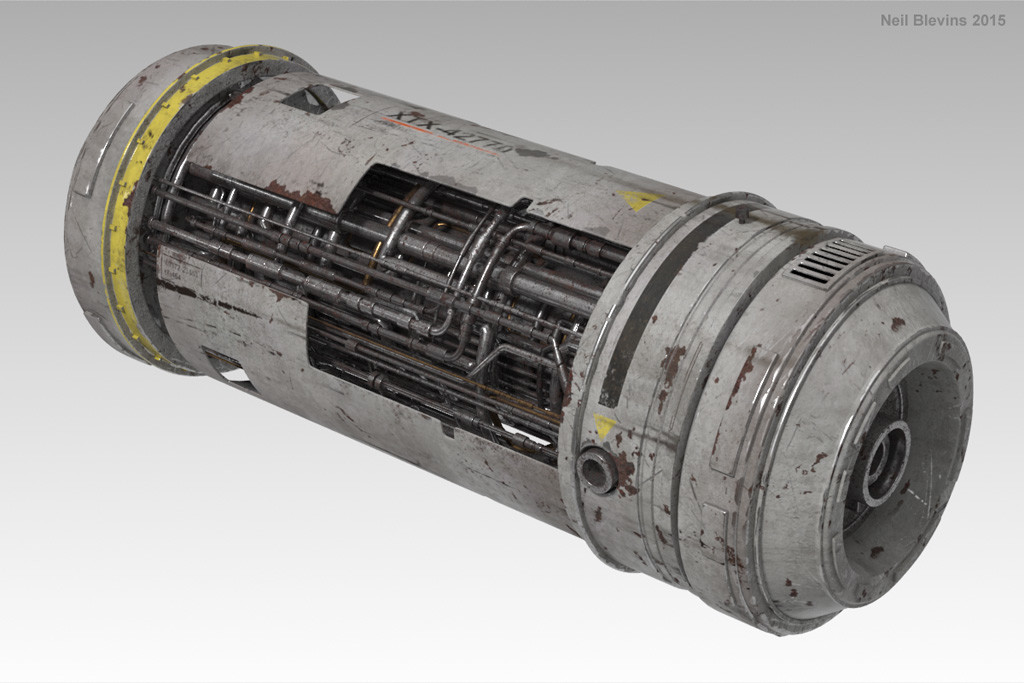
And one more. Each McKendree Cylinder has some larger flat areas, but when you approach the doorways to the cylinder on the side, you get a ton of extra small detail. This invites you to explore the area, seeing all the little greebles.
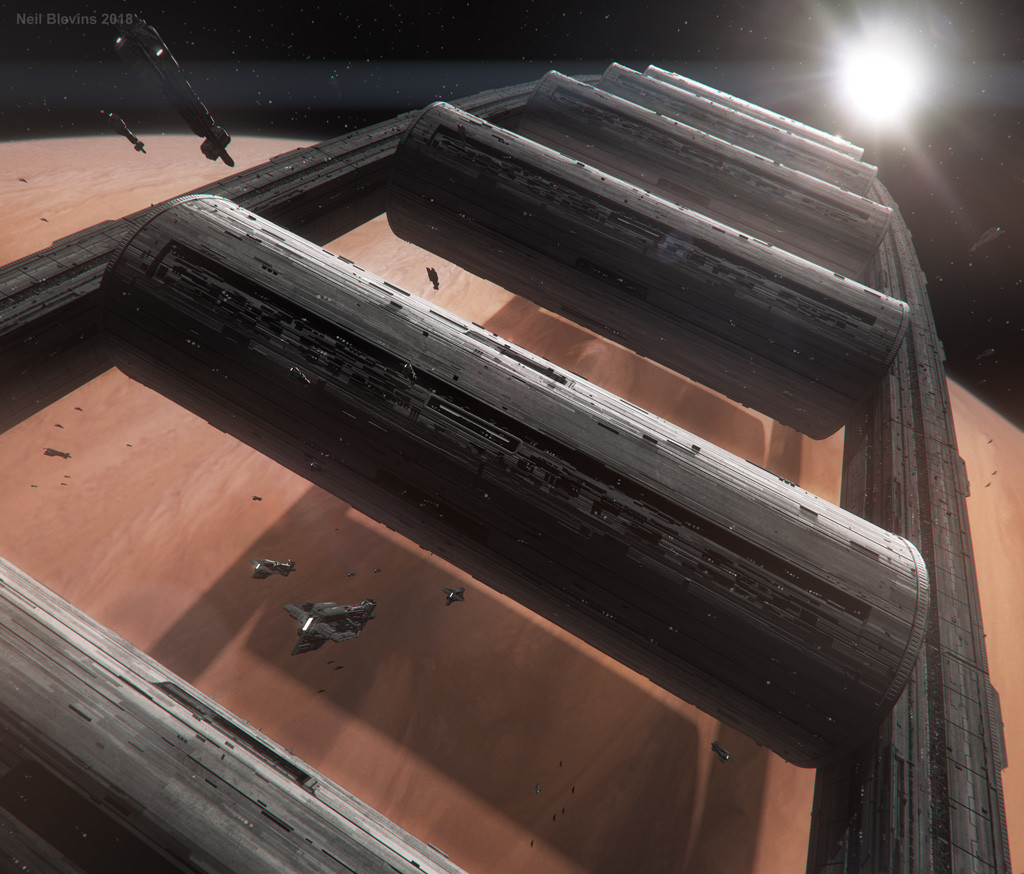
The same with the planet, the planet is an area of very low detail, and then you have these small pockets of tiny starships to contrast with the lack of detail on the planet.
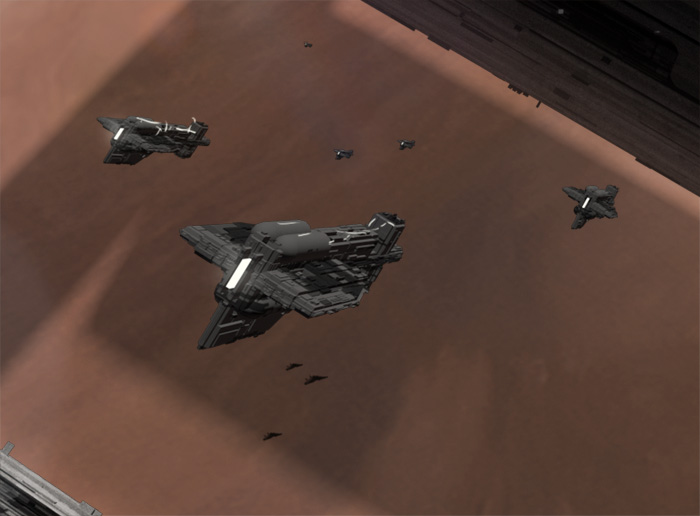
If the planet were super detailed, like thousands of tiny clouds, it wouldn't contrast with the spaceships, and the spaceships would be lost.
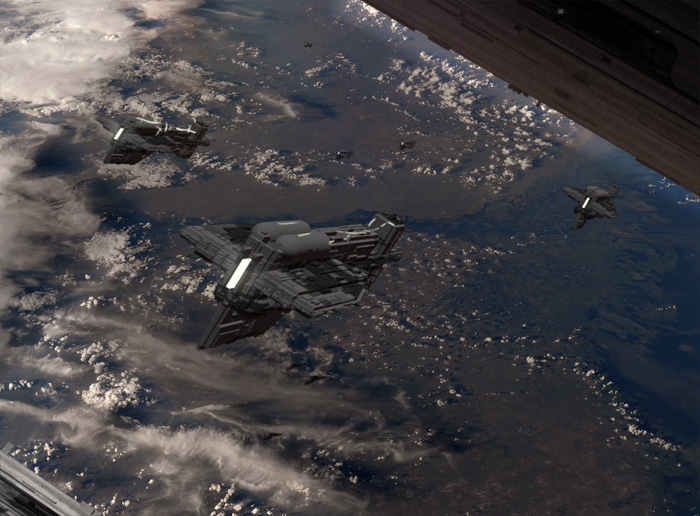
So the next time you're working on a painting or a 3d image, remember to balance your composition by making areas of visual detail and areas of visual rest.
For more information related to this tutorial, you may want to check out: Primary, Secondary and Tertiary Shapes, Contrasts In Composition, and Clumping or Grouping.
